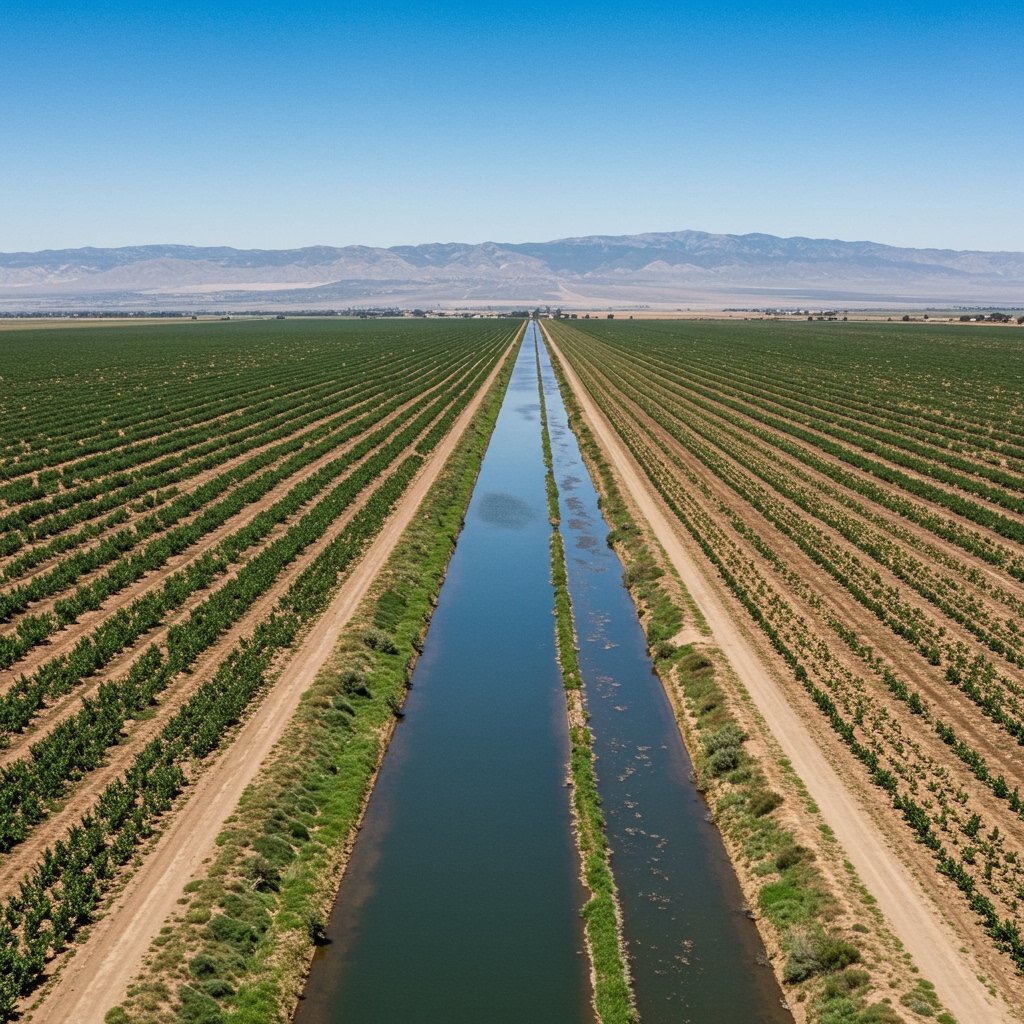State Mandates Water Reduction for Valley Farms
SACRAMENTO, CA – Citing emerging concerns over drought conditions and diminished water supplies, California’s State Water Resources Control Board has implemented an emergency regulation mandating a significant 25% reduction in surface water allocation for numerous agricultural districts throughout the expansive San Joaquin Valley. This decisive action, effective immediately, represents a pre-emptive measure aimed at conserving precious water resources as the state looks toward the 2025 water year.
The impacts of this quarter reduction are expected to be most acutely felt in regions heavily reliant on state water project deliveries, particularly areas within the Tulare Lake Basin. This agricultural heartland, renowned for its productivity, cultivates vast acreage of high-value, permanent crops, including almonds and pistachios, which require consistent irrigation. The mandated cut directly affects the amount of water these districts can draw from state-controlled surface water sources.
Basis for the Emergency Regulation
The State Water Board’s decision is a direct response to a recent hydrology report that presented a concerning outlook for the upcoming water year. The report projects significantly below-average rainfall and snowpack, key indicators of California’s water supply health. Following several years of drought conditions, punctuated by a relatively wet year, the potential return to scarcity has prompted state officials to act swiftly to bolster reserves and ensure critical supplies for essential human uses and environmental needs.
State officials emphasized that the emergency regulation is necessary to adapt to the projected shift in hydrologic conditions. While the past year provided some relief, historical patterns and current forecasting models suggest that relying on ample precipitation in 2025 would be imprudent. The proactive measure aims to stretch existing supplies and prepare for potentially drier conditions ahead, mitigating the need for more severe restrictions later.
Agricultural Sector Pushes Back
The announcement has been met with strong opposition from agricultural groups and farming communities across the San Joaquin Valley. The California Farm Bureau Federation, a leading voice for the state’s farmers, has been particularly vocal in its criticism. Representatives from the organization argue that the 25% cut will inflict severe economic hardship on farmers who are already grappling with escalating operational costs, including labor, energy, and inputs.
Farm Bureau officials highlighted that reducing water availability by a quarter could force farmers to make difficult decisions, such as fallowing fields, reducing plantings, or even removing permanent crops like trees if water becomes prohibitively scarce or expensive. They contend that these measures not only impact individual farm viability but also threaten the broader agricultural economy of the valley, which is a critical component of both the state and national food supply chains.
Local Water Agencies Express Concern
Echoing the sentiments of agricultural producers, local water agencies responsible for managing and distributing water within the affected districts have also voiced their opposition to the emergency regulation. These agencies are on the front lines, tasked with implementing the cuts and navigating the complex process of allocating reduced supplies among their member farmers.
Local water managers argue that while conservation is important, the state’s focus should shift towards long-term solutions rather than immediate, drastic allocation cuts. They are advocating for increased state investment in water infrastructure upgrades, such as expanding reservoir storage capacity, improving conveyance systems, and investing in groundwater recharge projects. These investments, they argue, would enhance the state’s resilience to drought cycles and provide more reliable supplies in the future, offering a more sustainable approach than recurring emergency restrictions that disrupt farming operations and economic stability.
The Dilemma: Balancing Needs and Resources
The State Water Board’s decision underscores the perennial challenge California faces in balancing the water needs of a vast agricultural sector, growing urban populations, and environmental requirements, particularly in the face of climate change and its impact on precipitation patterns. The San Joaquin Valley, often referred to as the ‘breadbasket of the world,’ relies heavily on imported surface water supplies to sustain its intensive agricultural production, making it particularly vulnerable during periods of scarcity.
The emergency regulation is enacted under the board’s authority to protect water resources during declared emergencies or periods of potential shortage. While state officials maintain the cut is a necessary precaution based on hydrological forecasts, agricultural stakeholders view it as an overly harsh measure that disproportionately burdens farmers, jeopardizing their livelihoods and the economic output of the region. The tension highlights the difficult trade-offs inherent in managing California’s complex water system under increasing climatic uncertainty. Discussions between state regulators, water agencies, and agricultural representatives are expected to continue as the region prepares to navigate the implications of the reduced water allocation.



















